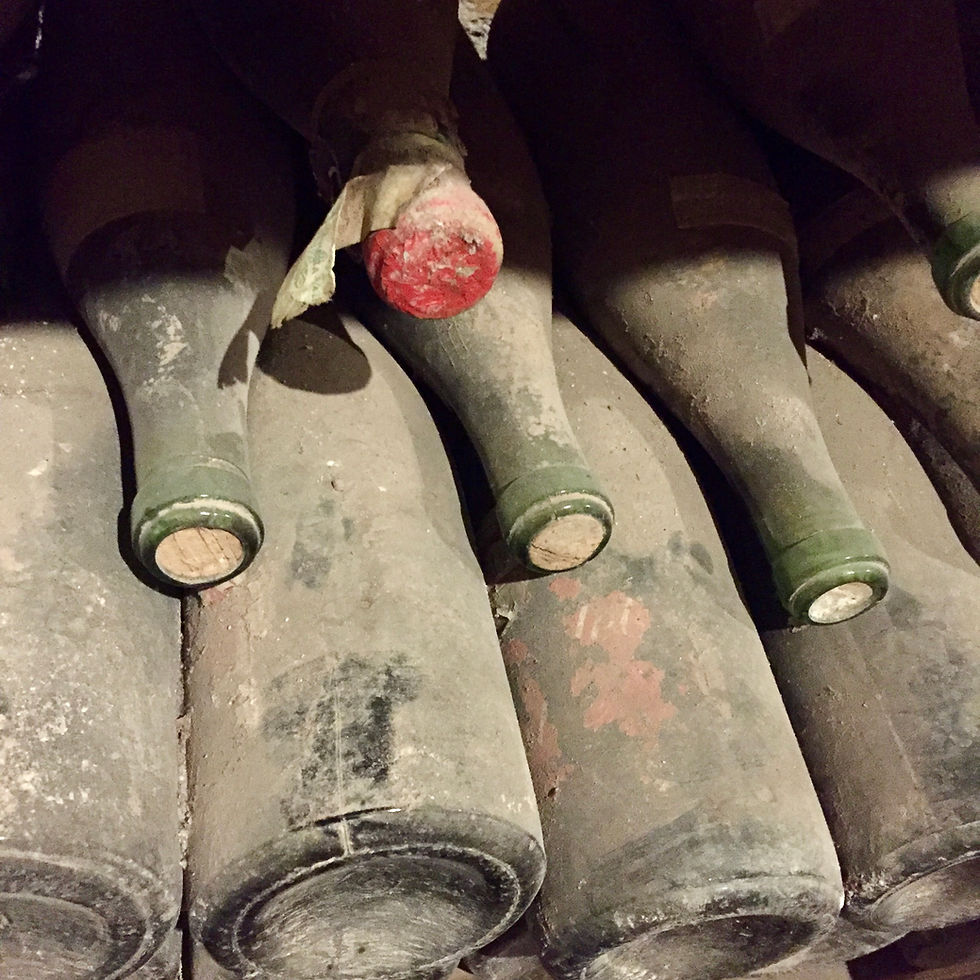If It's Red, Chill It!
- Joanna Simon

- Apr 20, 2018
- 3 min read
Updated: Sep 11, 2024
Before you do anything else this evening, put your red wine in the fridge. Yes, the weather is unseasonably hot in the UK, but I'd be saying this even if it wasn't because, unless you have a cellar or wine fridge, the chances are you’re drinking your reds warmer than is good for them (I seem to have been saying this forever).
The age-old advice to serve reds at room temperature may have worked in pre central-heating days, but most red wines, especially modern fruity ones, are best drunk at 14–17ºC, not a soupy 21ºC plus. It freshens, brightens and generally pulls the aromas and flavours together.
How long you need to chill red wine depends on your fridge temperature (as well as the wine itself). My fridge (scroll down for a tantalising photograph of its inside) tends to be on the less cold side, so I often have reds in the fridge for an hour in the summer, but you may find 30 minutes is enough. If you do over-chill a wine, it’ll come up to temperature soon enough when it’s poured.
The lighter bodied and less tannic your red, the cooler you can drink it, which is why Beaujolais has traditionally been served around 12–13ºC and why Pinot Noir is generally best at around 15–16ºC.
Save temperatures of 17–18ºC for the biggest reds (e.g. brawny Syrahs, Shirazes, Carignans and Zinfandels), tannic, young reds and top mature Bordeaux.
Generally, the cooler the climate the region of origin, the lighter bodied the wine, so reds from the Loire, Alsace and Germany have traditionally tended to be on the lighter side. Climate change is making things much less clear cut, but all three grow Pinot Noir, which is a variety to serve cool, as we've seen.
The Loire's Cabernet Franc (Cabernet Sauvignon's lighter sibling) should also be served cool, as should red varieties such as País (Chile), Frappato (Sicily), Bardolino and simple Valpolicella (Italy), Dornfelder (Germany), inexpensive Zweigelt (Austria) and Poulsard (Jura, France).
Colour can be a useful guide, too. Lighter coloured reds are often lighter bodied and therefore take well to a chill, but it's by no means a rule: grape variety and winemaking both count.
As I say, most of your reds should probably be put in the fridge, but here are 13 recommendations to get you going – and to make that 14 don't forget the delights of lightly chilled 10 and 20 Year Old Tawny port:
The Society’s Beaujolais-Villages 2017; £7.50, The Wine Society
Waitrose Beaujolais-Villages 2015/16; £7.69, Waitrose
Domaine Rochette Régnié 2016, a wine from the most underrated of Beaujolais’ ten Crus, Régnié; £14.50, Lea & Sandeman
Saint Pourçain La Réserve Spéciale 2016, a blend of Gamay and Pinot Noir from Les Vignerons de Saint Pourçain in the upper Loire; £7.75, The Wine Society
Ficelle de Saint Pourçain 2017, another Gamay/Pinot Noir blend from the Saint Pourçain co-operative; £10.99, Yapp Brothers
Les Nivières Saumur 2016, Cabernet Franc from the Loire; £8.99, Waitrose
Domaine Filliatreau Saumur-Champigny 2016, £14.25, Yapp Brothers
Château Béthanie Arbois Trousseau 2015, a jewel-bright, fragrant red made from the Trousseau grape in Arbois, Jura , £14 (or £12.60, club members), The Daily Drinker
Lot Series Te Haupapa Central Otago Pinot Noir 2017, £8.99, Aldi
Pike & Joyce Pinot Noir Vue du Nord, Adelaide Hills, £18.50, Lea & Sandeman
Isola della Fiamma Nero d’Avola 2017, a juicy, light-bodied version of Sicily’s indigenous Nero d’Avola grape – and a bargain; £6.50, The Wine Society
Pittnauer Red Pitt 2015, a juicy, soft, peppery, fresh-faced red made from Zweigelt, Blaufränkish and Merlot in Burgenland, Austria, £13.95, The Wine Society
Lyrarakis Kotsifali 2015, a medium-bodied, supple red with sweet red-berry fruit, tart-cherry freshness and notes of black pepper, leather and chestnuts, made from Crete’s Kotsifali grape, £10.50 (or £9.45, club members), The Daily Drinker

Put your red wine in the fridge – this is the inside of mine, in case you were wondering
Photographs by Joanna Simon

















Comments